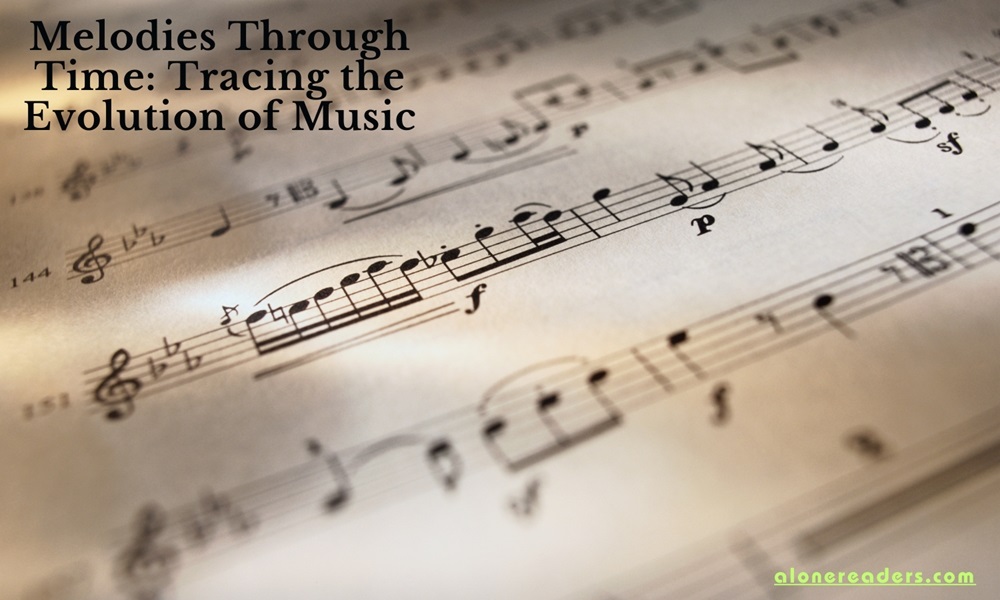
Music, an integral part of human culture, has evolved dramatically through the ages. From the primal beats of ancient civilizations to the sophisticated compositions of the modern era, music's journey mirrors the progression of human society. This article delves into the rich history and evolution of music, exploring its transformation and its impact on culture and society.
Music's origins are as old as humanity itself, rooted in the basic human instinct for rhythm and melody. In prehistoric times, music was predominantly rhythmic, using simple instruments like drums and clappers. These primal sounds served not just for entertainment, but as a means of communication and ritual.
The music of ancient civilizations, like Greece and Rome, began to incorporate more complex instruments and scales. The Greeks, for instance, developed theories of music that influenced Western music for centuries. They used music for entertainment, education, and as a tool for moral instruction, believing in its power to affect human emotions and behavior.
During the Middle Ages (500-1400 AD), music underwent significant changes. This era saw the emergence of the first notated music and the development of polyphony, a style involving multiple independent melodic lines. Gregorian chant, a form of plainchant, was predominant in religious settings, highlighting the importance of music in worship.
Secular music also flourished during this period, with troubadours and minstrels spreading stories and songs across Europe. This era laid the foundation for many musical forms and practices that would develop in the following centuries.
The Renaissance (1400-1600 AD) was a period of great creativity and innovation in music. Composers began to write music with greater expressiveness and emotional depth. The invention of the printing press in the 15th century allowed music to be distributed and shared more widely, leading to a rapid spread of musical styles and ideas.
Instrumental music gained prominence during this period, with the development of new instruments like the violin and the harpsichord. Vocal music also evolved, with the madrigal becoming a popular form of secular vocal music.
The Baroque period (1600-1750 AD) saw the rise of the composer as a central figure in music. This era introduced many of the forms that would dominate Western classical music, such as the opera, sonata, concerto, and symphony. Composers like Johann Sebastian Bach, George Frideric Handel, and Antonio Vivaldi were key figures of this period.
During the Baroque era, music became more dramatic and expressive. The use of harmony became more complex, and the development of tonality (the system of major and minor keys) became a defining characteristic of Western music.
The Classical period (1750-1820 AD) is characterized by a focus on clarity, order, and balance in music. Composers like Wolfgang Amadeus Mozart, Ludwig van Beethoven, and Franz Joseph Haydn wrote music that emphasized elegant melodies and clear structures. This period saw the development of the symphony and string quartet as major forms.
The piano became a popular instrument during this period, leading to the creation of a vast repertoire of piano music. Opera also continued to evolve, with the development of distinct styles like the opera buffa (comic opera).
The Romantic era (1820-1900 AD) was marked by a focus on emotion, individualism, and personal expression in music. Composers like Johannes Brahms, Richard Wagner, and Pyotr Ilyich Tchaikovsky wrote music that was more expressive and often programmatic, meaning it was intended to tell a story or depict a scene.
This period saw the expansion of the orchestra and the use of new instruments and techniques. The piano continued to be a central instrument, with composers like Frédéric Chopin and Franz Liszt pushing its technical and expressive limits.
The 20th century brought unprecedented diversity and innovation in music. Composers like Igor Stravinsky and Arnold Schoenberg broke with traditional forms and harmonic structures, experimenting with new styles and techniques like atonality and serialism.
This century also saw the rise of popular music genres like jazz, rock, and pop, which would come to dominate the musical landscape. The advent of electronic music and technology has further expanded the possibilities of musical creation and distribution.
The history of music is a story of constant evolution and change. From the simple rhythms of our ancestors to the complex compositions of today, music has been a mirror to human culture and emotion. Its journey is far from over, and the future promises even more innovation and diversity in the world of music.